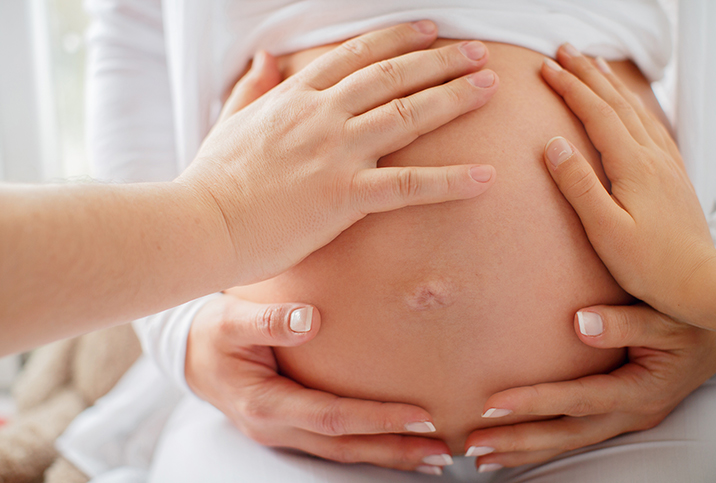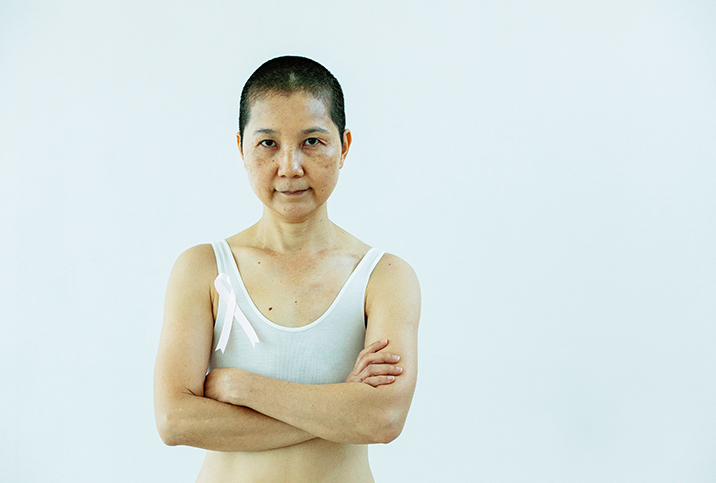Life After Breast Cancer

After receiving a diagnosis of breast cancer, a woman generally puts all her energy into fighting the disease: undergoing treatment, coping with the side effects of that treatment and dealing with the emotional roller coaster she, her family and loved ones are on. After treatment concludes, even if the woman has received the “all clear,” she may find herself wondering…what next? There are multiple challenges to life after breast cancer. Being prepared for them can make the journey go a bit more smoothly.
Overview of breast cancer
Breast cancer is the growth and multiplication of abnormal cells in breast tissue, primarily in women, though 1 percent of diagnoses are in men. Cancer can affect anyone, but those at particular risk include:
- Black and Ashkenazi Jewish women
- Women older than 50
- Women with a family or personal history of breast or ovarian cancer or certain genetic mutations (BRCA1, BRCA2)
Symptoms include a lump, thickening or hardening in the breast, breast skin changes, breast or nipple pain and nipple discharge. Diagnosis is made through biopsy, typically after a lump is detected during a manual exam or by screening tools such as mammography. Treatments often include a combination of surgery, radiation, chemotherapy, hormonal therapy, targeted therapy, immunotherapy and palliative care.
Breast cancer accounts for 30 percent of new cancer diagnoses in American women. More than 281,500 of them are expected to be diagnosed with breast cancer this year. It is the second most prevalent cancer in women after skin cancer. With the advancements in screening, detection and treatment, death rates have dropped steadily, particularly since 2000. Each year, an increasing number of women become breast cancer survivors and must cope with life after cancer.
Emotional impact
Breast cancer can have a devastating impact on many aspects of life. Its initial detection may stir feelings of fear, anxiety, sorrow and anger. Friends and family may also experience the emotional blow of the uncertainty surrounding the diagnosis. While making decisions about how to tackle the disease can alleviate some of the unknowns, treatment itself can still be daunting both physically and emotionally.
Of course, breasts don’t define womanhood, but after surgery, particularly a mastectomy in which all breast tissue is removed, a woman faces an immediate, monumental change in her body. She may feel less like herself, less feminine, less attractive and less desirable. Her self-confidence may decrease and relationships may suffer. Chemotherapy, too, can have devastating side effects, particularly hair loss. Hormonal treatments can cause vaginal dryness and discomfort, which may make sex uncomfortable. Women with breast cancer may struggle with the feeling that their body has betrayed them, and overcoming that and finding trust and love in their body again could take time. And as with any cancer, patients with breast cancer are faced with the very real fact that recurrence and death are possible. That’s a heavy toll to carry around for months or even years, and even women who recover may struggle with a persistent fear of their cancer coming back.
For people who lose a loved one to breast cancer, the emotional toll might linger for a long time. That's why a breast cancer diagnosis should be immediately followed by the establishment of a support system—whether of family, friends, a partner or new acquaintances through a formal support group. Patients should speak up and ask for recommendations from their oncology team for everything from social workers and therapists to palliative care and chaplains.
If you or a loved one are overwhelmed by breast cancer and having trouble coping with the emotional toll, ask for help.
Sex after breast cancer
One of the most significant long-term impacts of breast cancer treatment is the changes to a woman’s breasts, which in turn may alter her relationship with her body. Women who opt for reconstruction may take some time to get comfortable with their new look. Conversely, women who don’t get reconstructive surgery may embrace their flatter or asymmetrical chest immediately or struggle with the shocking difference. Some women embrace their scars or opt for tattoos. Scars can fade and flatten with time, but loving your own body is a different journey for all women, and many may feel less comfortable being naked in front of a partner or having a partner touch them.
Side effects from other treatments can also affect a woman’s sex life: hair loss from chemotherapy, fatigue and sensitive skin from radiation, vaginal dryness and discomfort from anti-estrogen hormone therapies (vaginal creams and lubricants can help). The latter symptoms may linger longest, as endocrine medications are often taken for five or more years.
Decreased libido is common after a breast cancer diagnosis and through treatment. A 2014 study from Psychology & Health reported that 77 percent of 83 breast cancer survivors, all three or more years out from diagnosis, qualified as having sexual dysfunction. A Journal of the National Cancer Institute study from 2002 looked at 763 women who had experienced breast cancer. Researchers reported that 6.3 years out from diagnosis, emotional and physical health had normalized for the women, but sexual function remained compromised, and sexual activity decreased from the baseline for the majority of the women due to symptoms, including vaginal dryness and urinary incontinence. Breast cancer doesn’t mean a woman can’t continue to have a great sex life, but there are several potential challenges she should anticipate.
Post-cancer lifestyle choices
One of the best ways to cope with stress over a potential cancer recurrence is to take control and do what you can to reduce the likelihood. Keep up with follow-up care as recommended, including taking any prescribed long-term hormonal therapies. While lifestyle changes can’t eliminate risk, they can significantly reduce the odds.
Start with the basics: Diet plays an instrumental role in every aspect of health. Minimize consumption of meat and processed foods, and incorporate more whole and plant-based foods—fruit, vegetables, whole grains, legumes—into your daily menu. Increase your intake of fiber and omega-3 fatty acids. Avoid trans fats entirely. Choose organic when possible, and rinse all fruits and vegetables well to minimize any contact with pesticides.
Avoid smoking and cut down on alcohol, as tobacco and booze both increase breast cancer risk. Physical activity is essential. The journal Breast Cancer Research and Treatment conducted a prospective study of more than 50,000 girls and young women ages 5 to 19, in 2017. It found that those who exercised seven or more hours a week benefited from a 23 percent drop in breast cancer risk compared with those who exercised less than an hour per week. Even low-impact activities such as walking can have a significant effect. A balanced diet and adequate exercise support the maintenance of a healthy weight, which further reduces breast cancer risk.
Reducing stress is important during and after breast cancer treatment, for both your physical and mental health. Find productive outlets: exercise, massage, yoga, support groups, meditation, acupuncture, artistic therapy, spending time with friends. Reflect on your experience with cancer; recognize your accomplishments and where you’ve become stronger. Acknowledge the struggles, but practice letting go and focusing on the good things in your life. Optimism can go a long way in improving your outlook and reducing the impact of cancer on your well-being. Reach out for help if you need it, and build a lifestyle that nurtures the positive.
Long-term care
Follow-up care after breast cancer treatment varies significantly. Some women will require only annual checkups and screening for a while; others may need ongoing hormone therapy or additional treatments that require follow-ups. Visits with your oncologist provide an opportunity to identify problems arising from treatment's side effects. Maintaining your follow-up schedule is essential to ensure you stay healthy and that any recurrence is caught quickly.
Recurrence risk varies significantly, depending on myriad factors: type of cancer, stage, grade, prior health and lifestyle choices. Radiation therapy and hormone therapies, including selective estrogen receptor modulators, or SERMs (such as tamoxifen), can reduce the likelihood of breast cancer coming back. A doctor can explain your recurrence risk and how to minimize it.
Breast cancer patients and survivors have reason to be optimistic. About 99 percent of women diagnosed with stage I breast cancer live at least five years after diagnosis. New screening and detection methods increase the likelihood of early detection, treatments continue to improve and new trials are always underway. Stay positive. There is life after breast cancer—enjoy every minute of it.


















